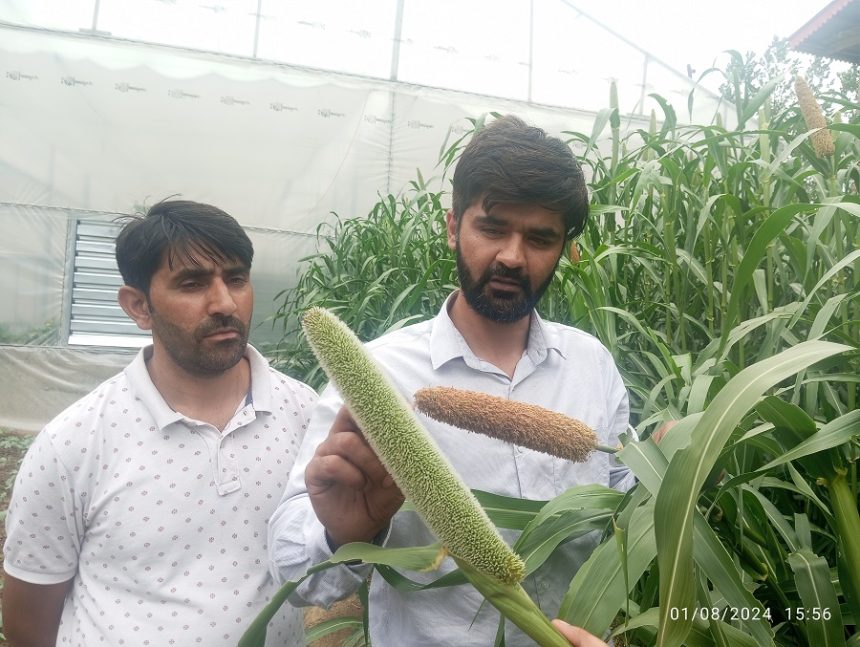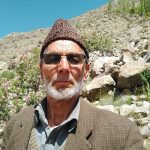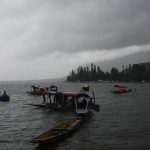Pulwama : In the historic town of Kakapora in Pulwama district, a young, educated farmer named Imtiyaz Ahmad Mir is becoming a pivotal figure in Kashmir’s millet cultivation.
Despite his initial uncertainty about the crop, which remains unfamiliar to many farmers in the region, Mir’s dedication and the guidance of agricultural officials have led to a notable success in millet cultivation.
Mir’s journey into millet farming began with no prior knowledge about the crop.
However, under the mentorship of Syed Tawseef Ahmad, the Agriculture Extension Officer (AEO) in Kakapora, Mir’s efforts have not only borne fruit but have also set a benchmark for millet farming in the region.
According to Shakeel Ahmad Dar, the Sub Divisional Officer of Agriculture Production and Farmers Welfare Department in Kakapora, Mir’s millet trial stands out as the most promising among numerous trials conducted in the sub-division.
The significance of Mir’s success is heightened by the broader context of millet cultivation in Kashmir.
The region, traditionally known for crops like rice, has seen declining cultivation of millet varieties like Proso millet (Panicum miliaceum) and Foxtail millet (Setaria italica), especially in its hilly areas.
These traditional varieties faced a risk of extinction, prompting authorities to initiate a revival project under the Holistic Agriculture Development Programme.
In this context, the success of Mir’s millet trial is particularly noteworthy.
His farm, located along the Srinagar-Pulwama highway, has become a focal point for agricultural scientists and enthusiasts alike. “Each day, many people visit this site to see the millet crop,” Mir shared, adding that he has chosen to grow Pearl Millet for his trial.
He emphasised that Pearl Millet requires minimal water in its initial stages, a need that normal rainfall can fulfill, making it ideal for land with irrigation challenges.
The initiative to introduce millet cultivation was part of the Holistic Agriculture Development Programme Project 8 (HADP P8), under which AEO Syed Tawseef Ahmad distributed free seeds of various millet varieties to 23 farmers. Along with seeds, farmers received inputs like tools, vermicompost, and nutrients and guidance.
The trial was conducted on approximately 12 hectares of land, with successful results in Puchal, Lajoora, and Kakapora.
Syed Tawseef Ahmad highlighted the resilience of millet crops, noting their low water requirements and suitability for areas with unreliable irrigation. “Millets are climate resilient and require less water,” he explained, adding that the crop needs moisture during sowing and the knee stage phase of growth, requirements typically met by normal rainfall.
In Kakapora, Pearl Millet plants have reached the inflorescence stage, with each plant boasting around 6 to 10 tillers. The expected yield is about 2.5 quintals of Pearl Millet.
Mir’s success has garnered praise not only for his agricultural prowess but also for the health benefits of millet. With growing awareness about the nutritional advantages of millets, health-conscious consumers are increasingly preferring them over rice.
Millets, small seeded plants belonging to the Gramineae family, are known for their numerous health benefits, including anemia prevention, digestive health, cholesterol control, detoxification, diabetes management, and anti-cancer properties.
The revival of millet cultivation in Kashmir has also been supported by the Sher-e-Kashmir University of Agricultural Sciences and Technology of Kashmir (SKUAST-K). The university has introduced Kodo millet (Paspalum scrobiculatum) and Barnyard millet (Echinochloa frumentacea) in the plains of Kashmir and is developing cultivation practices for these crops.
Mir’s success story serves as an inspiration for other farmers in the region.
The Agriculture Extension Officer revealed plans to expand the area under millet cultivation in the next season.
By encouraging the growth of millets on lands with irrigation challenges, the initiative aims to ensure food security and promote sustainable farming practices in Kashmir.








